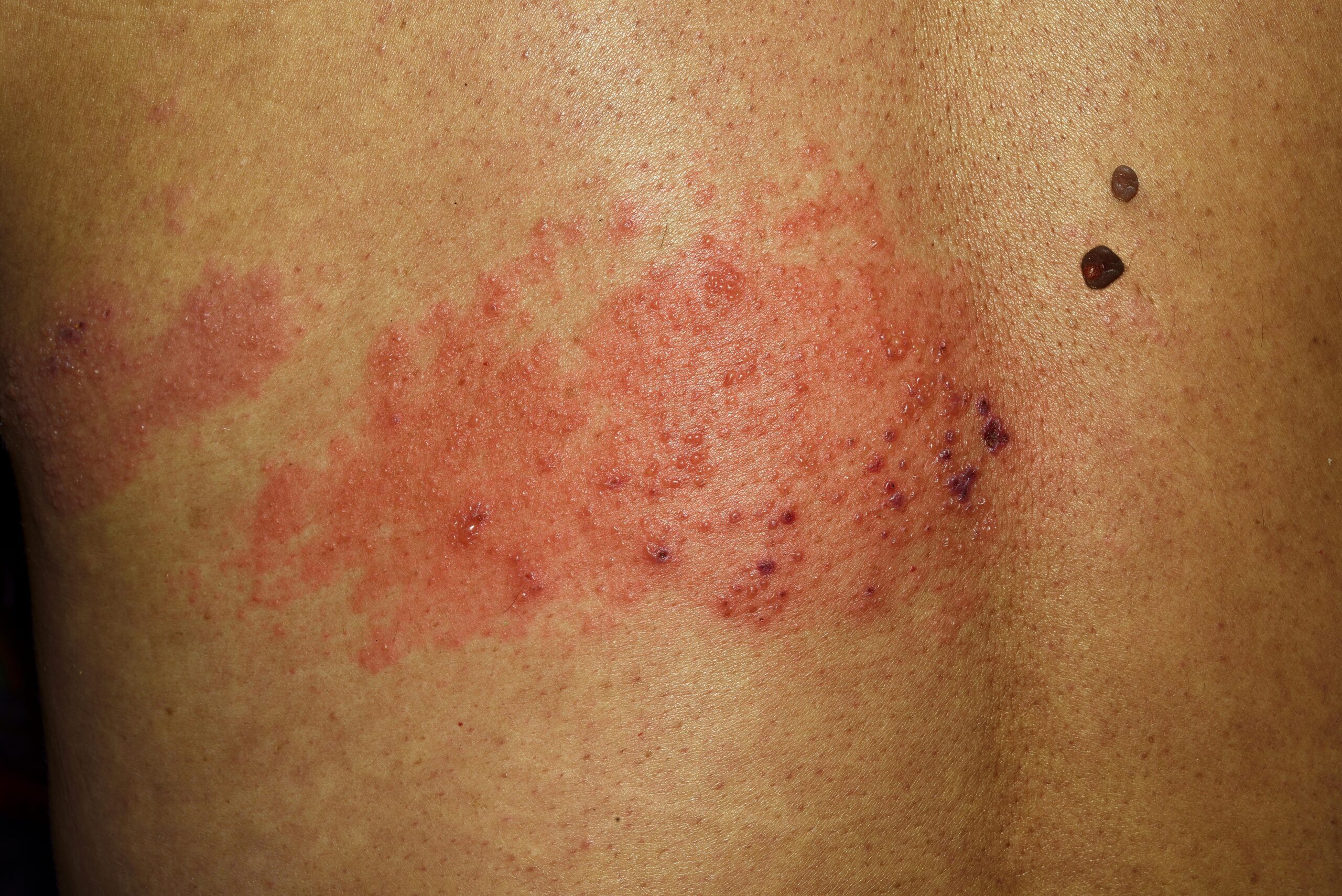Stages of shingles
Do you remember having chickenpox as a kid? Yep, that rash that itched super bad and made you look like you had red polka dots all over. Did you know that if you had chickenpox, you’re at risk for getting another viral infection called shingles or herpes zoster? Keep reading to learn more about this common viral condition, the stages of shingles and how to get medication for shingles online.
What is shingles?

Shingles is a viral infection that people who have had chickenpox may develop later in life. It occurs when the virus that causes chickenpox – varicella-zoster – reactivates within the nerve tissues. When this happens, the virus replicates within bands of nerve cells that wrap around the right or left side of the body. In most cases a shingles rash outbreak occurs along the torso, neck or face.
Stages of shingles
Like any viral infection, shingles has a predictable lifecycle. The virus often strikes when a person’s immune system is weakened by things like stress, an illness or a chronic condition. That’s why shingles tends to be more common in people over the age of 50 – although anyone who has had chickenpox can develop a herpes zoster infection.
Once reactivated, the shingles virus progresses in stages.

1. Preeruptive phase – One to five days before you notice any visible signs of a shingles outbreak, you’ll likely notice other signs and symptoms including a tingling, itching or burning sensation in the area where the outbreak will occur. Some people also experience a headache, fever, chills and upset stomach.

2. Acute eruptive phase – During the eruptive or active phase of a shingles infection, a rash of blisters erupts along nerve bands. This rash is painful and may also itch and be accompanied by other symptoms like fatigue, fever and headache. These symptoms typically resolve within 10 to 15 days but sensitivity and pain can linger for several weeks.

3. Chronic phase – Up to 20% of people who develop shingles will experience a type of chronic pain known as post-herpetic neuralgia. This pain can persist for months or even years and tends to be more prevalent in individuals age 60 and older.
Medication for shingles
A shingles infection is often quite painful and serious complications can occur if it’s located on the head or face. Thankfully, there are several prescription antiviral medications that can help reduce the duration and severity of a shingles infection. But, to be effective, these medications must be taken within 72 hours or three days of when you first notice a shingles rash.
Antiviral medications for shingles
- Acyclovir
- Valacyclovir
- Famciclovir
In addition to prescription antivirals, over-the-counter pain medication like Tylenol can be taken to help quiet pain associated with a shingles infection. Calamine lotion and cool packs can also be applied to the affected area to help relieve itching and discomfort.
Preventing shingles
According to the Centers for Disease Control and Prevention, the most effective way to prevent a shingles infection is to get vaccinated. For kids and adults who haven’t had chickenpox, it’s important to get the Varicella vaccine. If you’ve had chickenpox and have a weakened immune system or are over the age of 50, it’s recommended you get Shingrix, the shingles vaccine.
In addition to vaccination, it’s important to keep your body healthy and active. Make sleep a priority and aim to get seven to nine hours each night. To help keep your immune system strong, eat a nutrient-dense diet that includes lots of fruits and vegetables and aim to get 30 minutes of exercise each day.
Share this post
Do you know someone who could use a simple & affordable healthcare option?

